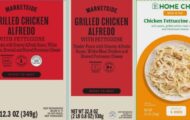The Interagency Food Safety Analytics Collaboration (IFSAC), a tri-agency group that was created by the FDA, CDC, and USDA, has released an executive summary of the pathogens that cause foodborne illness and the foods they are linked to. Researchers looked at Salmonella, E. coli, Listeria monocytogenes, and Campylobacter outbreaks and illnesses for 2016. These pathogens were chosen because they cause 1.9 million illnesses each year combined, and cause severe illness.

The IFSAC data was derived from 1255 foodborne illness outbreaks that occurred from 1998 to 2016 that were linked to a single food category. These estimates will help these agencies to intervene and to create policies for reducing outbreaks.
Overall, E. coli O157 illnesses were most often linked to leafy greens and other vegetable row tops, and with beef. Listeria monocytogenes outbreak were linked to dairy products and fruits. Salmonella illnesses were linked to a wide variety of foods. And non-dairy Campylobacter illnesses were most often linked to chicken. Since most Campylobacter outbreaks are associated with raw milk, the researchers removed that category to find that chicken is an important source of illness from that pathogen.
Looking at each pathogen in more detail, more than 75% of the Salmonella outbreaks were attributed to seeded vegetables (such as tomatoes), chicken, pork, fruits, other produce, eggs, and beef. And nearly 75% of E. coli illnesses were caused by leafy vegetables and beef. More than 75% of illnesses caused by Listeria monocytogenes were attributed to dairy and fruits. Listeria outbreaks linked to vegetable row crops increased in 2016 because of a large outbreak in 2015 that was linked to prepackaged lettuce. Finally, for Campylobacter, the non-dairy illnesses were attributed to chicken, other seafood, turkey, other meat, and vegetable row crops.
This IFSAC data is used by officials to design interventions to reduce illnesses. Unfortunately, there have been “novel” pathogen-food pairings that have caused significant outbreaks, such as the 2017 E. coli outbreak linked to SoyNut Butter. In other words, interventions need to target a variety of food categories through regulation and performance standard measurements.




